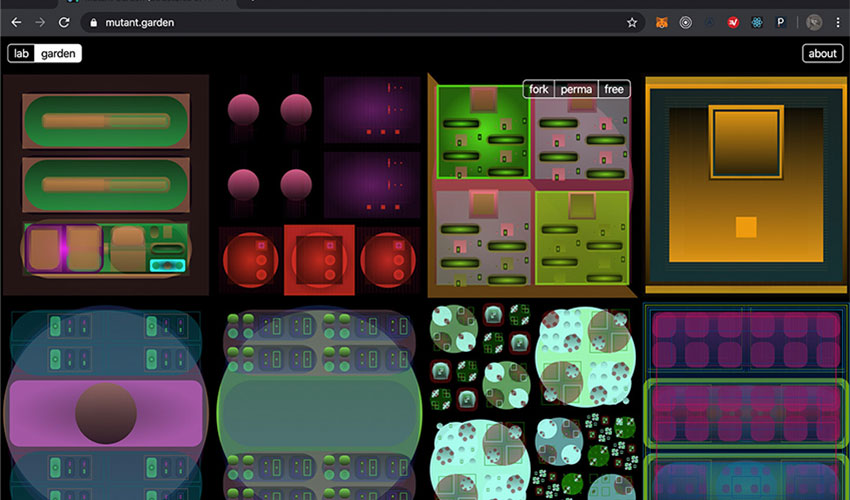Text by CLOT Magazine

Harm van den Dorpel is a Berlin-based Dutch conceptual artist regarded as a key figure in the post-internet art movement. They developed a new way of exploring technology, digital footprints, and social networks alongside other contemporaries. Recently, he’s presented a new artwork, Mutant Garden (2020), which represents another instalment in a series of chronological inquiries into the history of computation.
In Mutant Garden, extremely appealing colourful geometric shapes play the role of parenting entities. Clicking one rectangular ‘mutant’ will cause its siblings to be replaced with newly mutated offspring. This breeding strategy requires only one parent to be selected because the algorithm is the most effective when mutation, rather than cross-over, is applied. It feels as if op-Art was having fun at a molecular biology lab.
This artwork uses an algorithm called ‘Cartesian genetic programming’ proposed by Julian F. Miller and Peter Thomson approximately twenty years ago. It is called ‘Cartesian’ because it represents a program using a two-dimensional grid of nodes. By its nature, its genetic encoding contains many redundant genes, which are well known to assist in effective evolutionary development.
As many people nowadays equate artificial intelligence with neural networks, the artist wants to highlight other moments in this recent history of computation, approaching it as algorithmic archaeology. Each new innovation in this lineage aimed to improve or render its predecessor obsolete yet would simultaneously stand on its shoulders.
Mutant Garden was preceded by Markov’s Window (2004), Death Imitates Language (2015), Algues Artificielles (2017), and Nested Exchange (2018).






